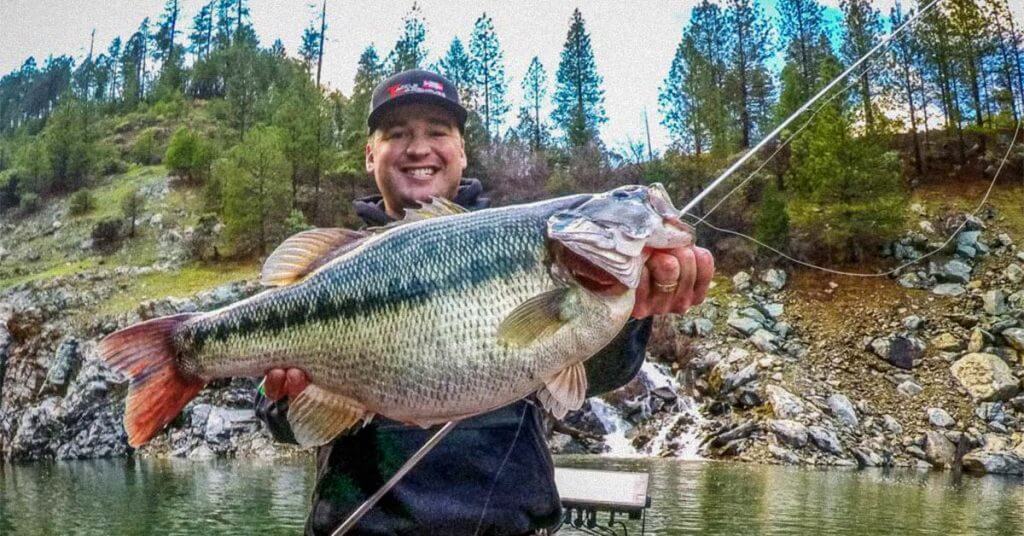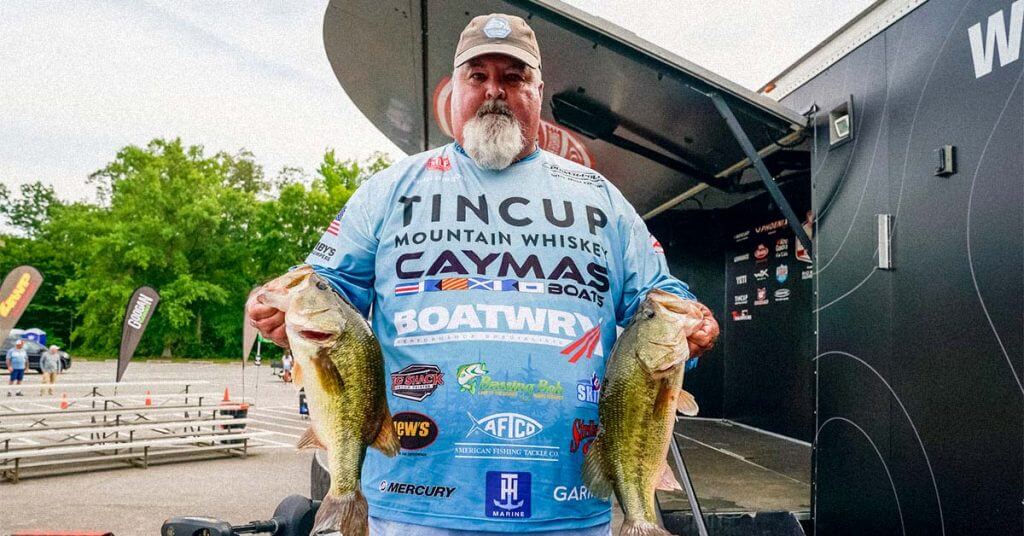Pro bass fisherman John Cox uses a different type of depth finder than most of his competition on the Bassmaster Elite Series.
Instead of flipping the switch on an electronic device and staring at a screen like a kid watching a cartoon, Cox takes a simpler approach.
“I stick my rod into the water, and if I can touch the bottom, I know I’m in the right place,” said Cox, who grew up fishing the shallow lakes of Florida. “If I feel sand or shell on the bottoms, all the better.”
“Florida lakes have a lot of muck. When you can find some spots with a hard bottom, it will hold fish.”
In a sport where virtually all the pros are competing to see who knows the most about sophisticated electronics, Cox is a refreshing change.
He is bass fishing’s ultimate shallow-water specialist.
While others are out following open-water bass with forward-facing sonar in significant tournaments, Cox remains shallow, spraying casts at visible targets such as laydowns, brush piles, boulders, and docks.
But it’s not like he is being left behind because of his reluctance to follow the crowd and fish off-shore.
Cox remains one of the best fishermen in the pro game, notching 11 wins in major tournaments, including the prestigious FLW Cup in 2016.
The average bass angler can learn a lot from Cox.
As he puts it, you don’t have to go around a lake with your face glued to a computer screen. Follow Cox’s advice on fishing shallow, and you’ll start catching them, too.
Table of Contents
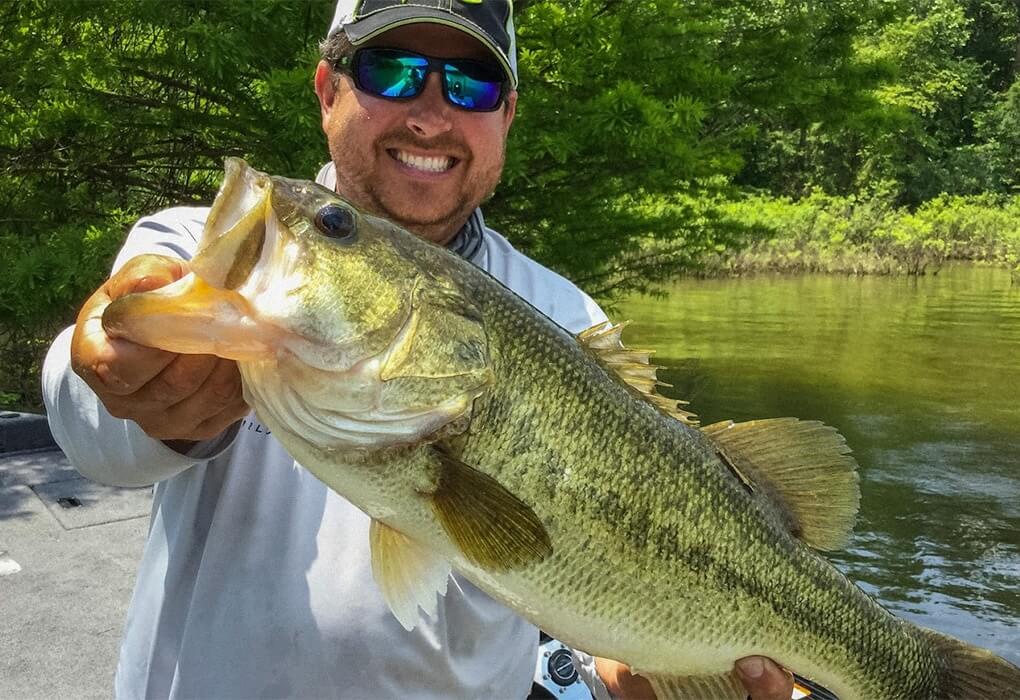
John Cox has made a name for himself, staying shallow to catch big bass (photo by FLW/Major League Fishing)
Old-School Bassin’
It’s not like Cox doesn’t own a forward-facing sonar unit, the latest craze in bass fishing. He has a Lowrance Active Target, a sonar unit designed to show the real-time movement of fish.
It’s just that he doesn’t use it.
“I have that unit in the cab of my truck,” said Cox, 38, who lives in Debray, Fla. “I look at it constantly and ask, ‘Is today the day? Is this the day I put it on my boat?’
“But I never do. I just can’t bring myself to change my fishing style.”
Cox knows he has paid for that stubbornness. The last three tournaments he has fished were won off-shore by anglers using forward-facing sonar.
And that was at a time when the bass were typically in the shallows preparing to spawn.
Still, Cox knows there will always be bass in the shallows. And he has developed techniques to catch them.
“I have to stay with what I love,” he said. “I love observing nature to catch fish, whether it be birds diving down on baitfish or just spotting bass swimming through shallow water.”
“I am so worried that forward-facing sonar will take that away from me; that I’ll only be watching the screen instead of paying attention to what nature tells me.”
For the last several years, Cox has stayed true to himself. Fishing multiple top bass circuits–including the Major League Fishing Bass Pro Tour and the Bassmaster Elites one year–he has consistently ranked near the top.
That’s impressive, considering that his busy schedule allowed for little practice. But it all comes down to his strength, shallow-water fishing.
“For the last two or three years, I’ve stayed in my comfort zone,” he said. “I love going down a bank and throwing at a dock, a stump, a laydown, a bush, some type of structure I can see.”
“There are years when I’ll never fish more than six or seven feet deep in tournaments.”
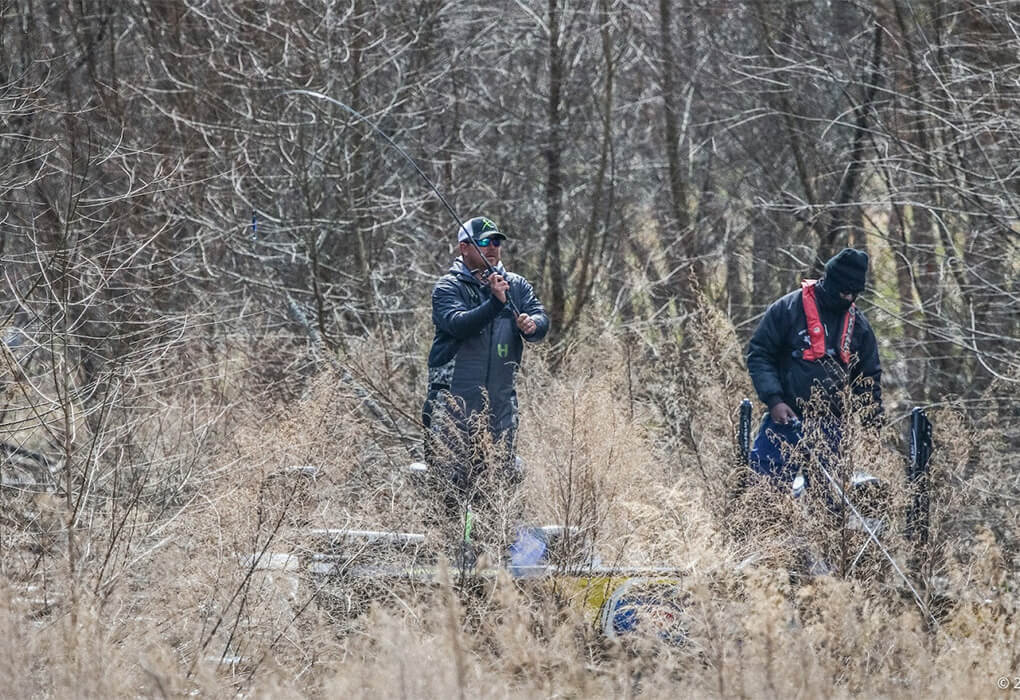
Thick, tangled, backwater cover–That’s John Cox’s type of fishing spot (photo by Kyle Wood/Major League Fishing)
Fishing Shallow
Cox has a simple fishing mission. If there’s enough water to float a boat, he’s going to fish there.
That has led him to some secluded spots where the bass seldom see lures.
Cox has even adjusted the type of boat he uses to suit his fishing style. Instead of most pros’ heavier fiberglass models, he uses a Crestliner aluminum boat modified for shallow-water fishing.
“In one FLW tournament, the reservoir was flooded, and I knew the bass would be back in those backwater areas,” he said.
“I had a little Crestliner aluminum boat that we used for alligator hunting, and I was able to get back into some spots no one else could get to, and I won the tournament.”
Cox has been running an aluminum boat ever since. And he regularly travels to sections of reservoirs so secluded that other anglers ask, “How in the world did he get back in there?”
“I remember one Forrest Wood Cup where I ran as far up this little creek as I could go,” he said. “It was really shallow, and it was full of logs and stumps.”
“I had my motor mounted so high on my jack plate that it was barely in the water. But it was worth it. I caught fish back in there.”
Cox has seen aluminum bass boats evolve. He now runs a 21-foot Crestliner with a 250-horse motor–not exactly a good ol’ boy’s flat-bottom boat. But it still serves the purpose when Cox wants to get in shin-deep water.

John Cox often uses plastic baits made by his sponsor, Berkley, when he fishes shallow (photo by Jody White/Major League Fishing)
Saluting the General
Cox discovered his favorite shallow-water bait almost by accident.
When he would take his kids fishing, he searched for a bait that would get them lots of action. He tried a Berkley General, a soft-plastic stick bait, and was immediately impressed with the results.
He started using the bait in tournaments, mostly rigging it wacky style (with the hook in the middle of the bait so that it would have plenty of action when it fluttered down and weightless.
Casting around shallow cover, the General produced impressive results. It got even better when Berkley came out with a MaxScent version of the bait.
The lure is infused with MaxScent juices that leach into the water, and the plastic has more of a dull, natural look to it. “It looks natural instead of shiny,” Cox said. “It looks like something you would see in the water.”
That has become Cox’s favorite baits, rigged either wacky style or Texas style, weedless with the hook buried in the plastic.

The Frittside is a flat-sided crankbait that is a go-to lure for many pros, including John Cox
A Cox-Approved Crankbait
Looking for a great shallow-water crankbait? Try the Berkley Frittside crankbait.
The flat-sided crankbait, with a silent, tight wobble, is one of Cox’s favorites when the cover isn’t too thick.
“The No. 5 Frittside is my favorite cold-weather bait,” Cox said. “It’s more of a finesse crankbait that you can cast a mile.”
“It’s good for super-pressured fish. Even when conditions are tough, I feel I can usually catch something on a Frittside.”
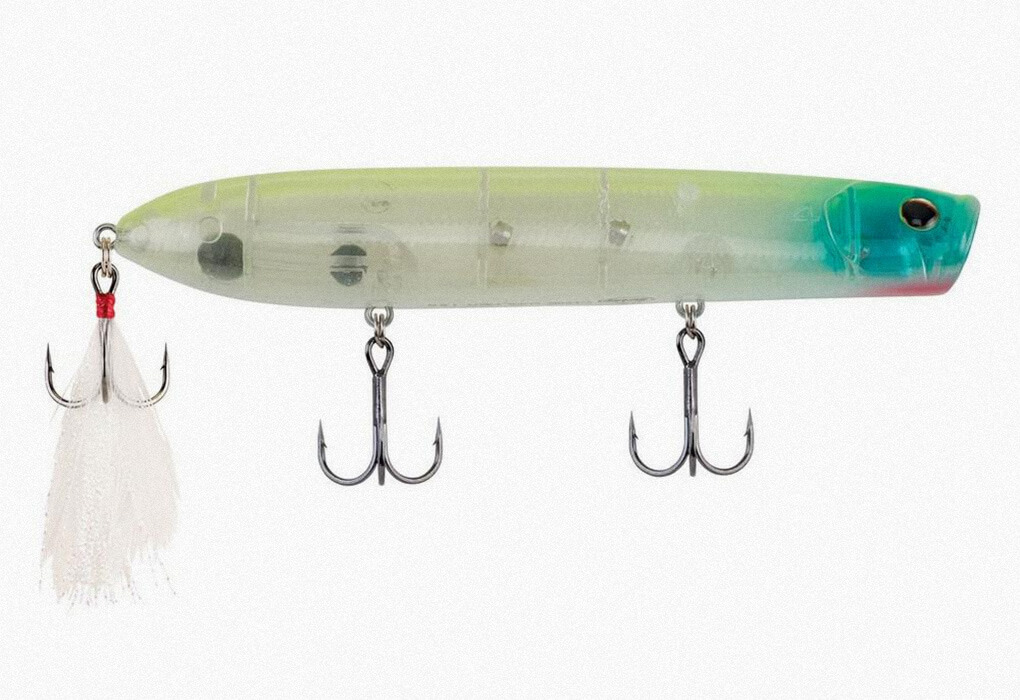
The Berkley Cane Walker
A Topwater Lure That Wakes Them Up
When Cox wants to use a topwater lure, he often reaches for a Berkley Cane Walker.
The lure features a Zara Spook-type body and a popper mouth. When zig-zagged across the surface, the mouth digs in and spits water, creating a commotion.
“It really gets the bass to come up,” Cox said. “Once the water gets warm, I’ll throw the Cane Walker all day.”
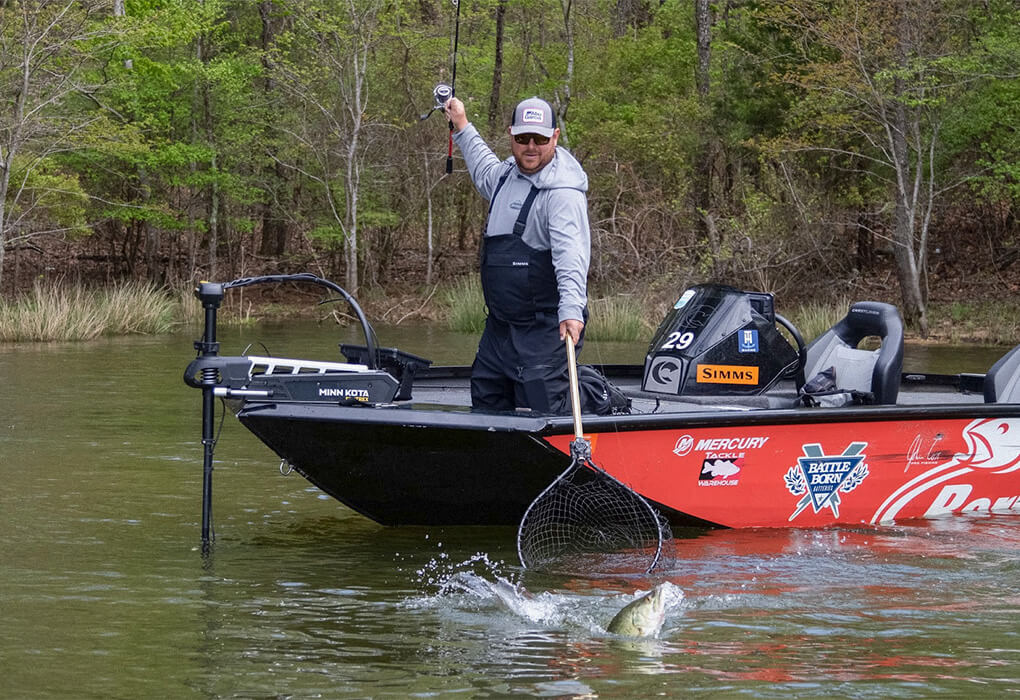
Cox recommends that beginners fish areas they can relate to when they try new lakes (photo by Jody White/Major League Fishing)
Tips for Beginners
Cox recommends that beginners rely on past experiences when fishing a new lake.
They should look for something that reminds them of a place where they once found success on another body of water.
“You can even look at lake maps or charts ahead of time and search for something that looks familiar,” Cox said. “That’s a good start.”
Keep typical seasonal patterns in mind when searching for places to start.
For example, a cove with gravel banks can be a good place to fish in the spring when the fish are moving in to spawn. A main lake point with dropoffs can be a good place to start in the summer.
Conclusion
I like Cox’s approach. He’s not a sheep. He doesn’t blindly follow the crowd and do what’s in style at the moment.
He plays to his strength and stays shallow, where he has the confidence to find bass.
Recreational anglers can benefit from his approach. Resist the urge to drop money on the “latest thing.”
I remember when the Color-C-Lector was big, and I rushed out to buy one. The electronic device would read conditions and tell anglers what color of lure to use.
I guess it worked, but I soon learned it wasn’t a cure-all. Electronic devices, no matter how well they are marketed, seldom are.
It’s far more important to get a good working knowledge of how the bass’ ecosystem operates–how seasonal patterns, fronts, water clarity, wind, and baitfish affect fish movement and positioning.
I’m still working on that.
I own some high-dollar electronics, and I admit they help me find fish. But I’m always more excited when I can read conditions and determine where to fish on my own rather than getting a signal from a machine.
Let me know what you think about Live Imagining Sonar in the comments section.
Until next time, keep chunkin’. The fishing is about to get good.

